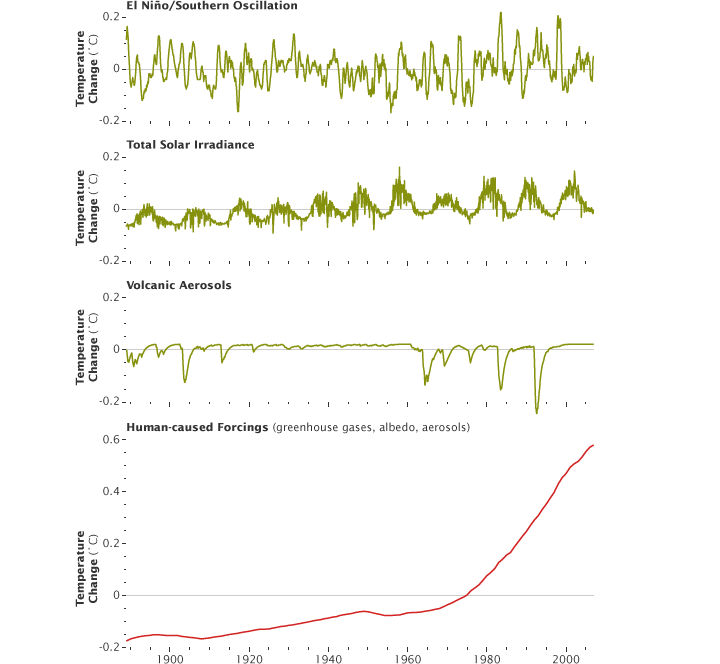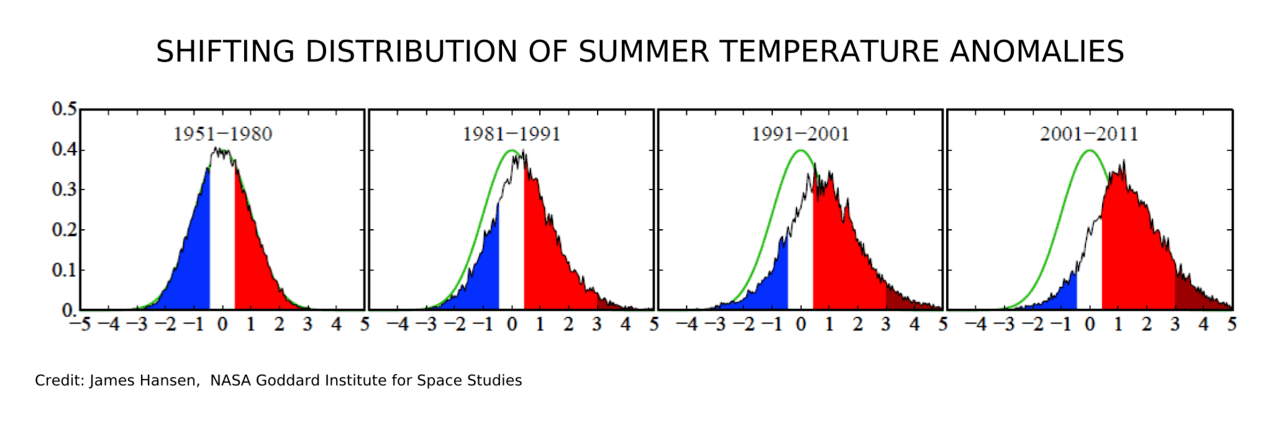Detection vs Attribution
Detection and attribution of climate signals, as well as its common-sense meaning, has a more precise definition within the climate change literature, as expressed by the IPCC.[17]
Detection of a signal requires demonstrating that an observed change is statistically significantly different from that which can be explained by natural internal variability.
Attribution requires demonstrating that a signal is:
unlikely to be due entirely to internal variability;
consistent with the estimated responses to the given combination of anthropogenic and natural forcing
not consistent with alternative, physically plausible explanations of recent climate change that exclude important elements of the given combination of forcings.
Detection does not imply attribution, and is easier to show than attribution. Unequivocal attribution would require controlled experiments with multiple copies of the climate system, which is not possible. Therefore, attribution, as described above, can only be done within some margin of error. For example, the IPCC's Fourth Assessment Report says "it is extremely likely that human activities have exerted a substantial net warming influence on climate since 1750," where "extremely likely" indicates a probability greater than 95%.[1]
Detection and attribution of climate signals, as well as its common-sense meaning, has a more precise definition within the climate change literature, as expressed by the IPCC.[17]
Detection of a signal requires demonstrating that an observed change is statistically significantly different from that which can be explained by natural internal variability.
Attribution requires demonstrating that a signal is:
unlikely to be due entirely to internal variability;
consistent with the estimated responses to the given combination of anthropogenic and natural forcing
not consistent with alternative, physically plausible explanations of recent climate change that exclude important elements of the given combination of forcings.
Detection does not imply attribution, and is easier to show than attribution. Unequivocal attribution would require controlled experiments with multiple copies of the climate system, which is not possible. Therefore, attribution, as described above, can only be done within some margin of error. For example, the IPCC's Fourth Assessment Report says "it is extremely likely that human activities have exerted a substantial net warming influence on climate since 1750," where "extremely likely" indicates a probability greater than 95%.[1]





